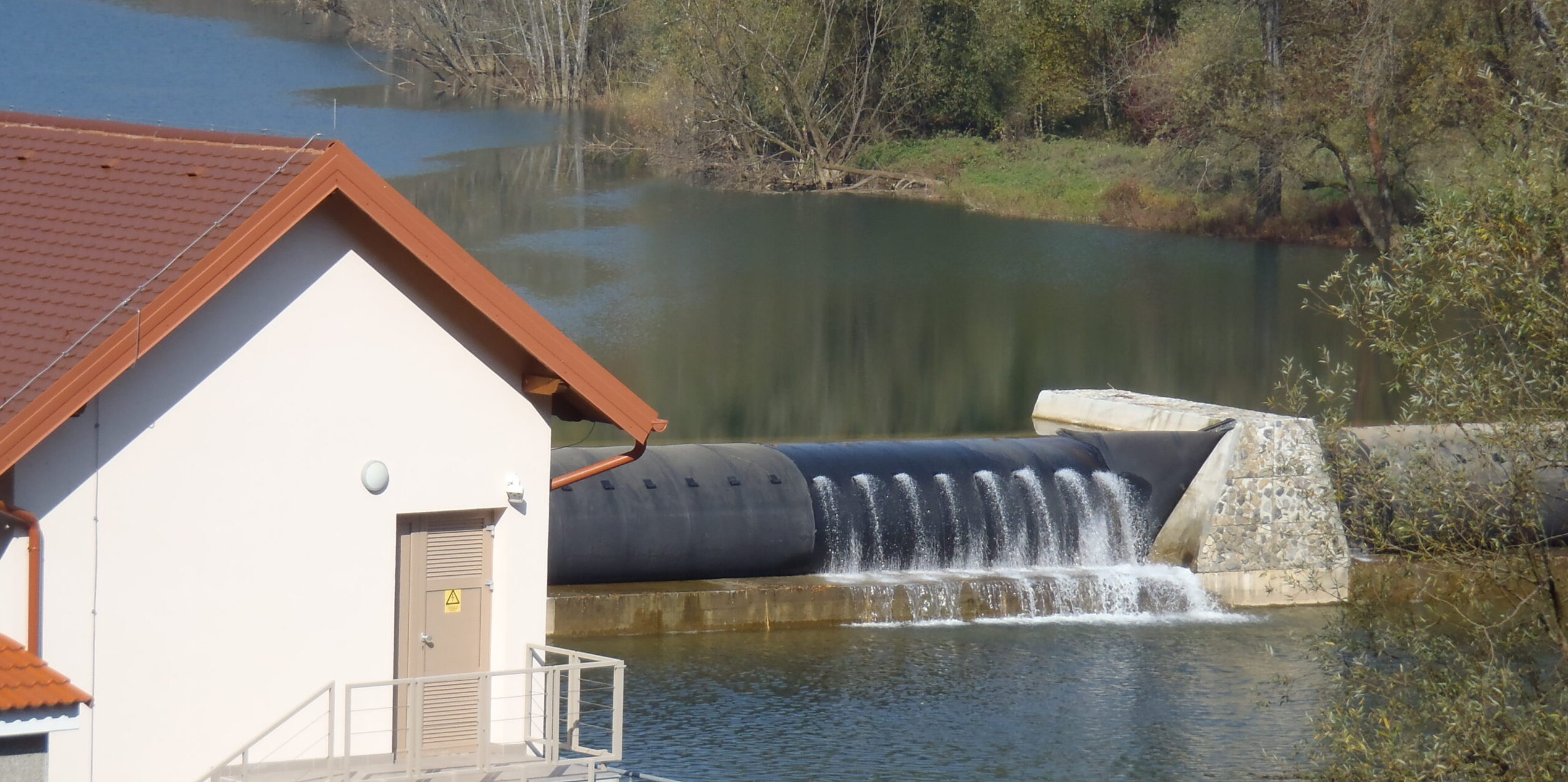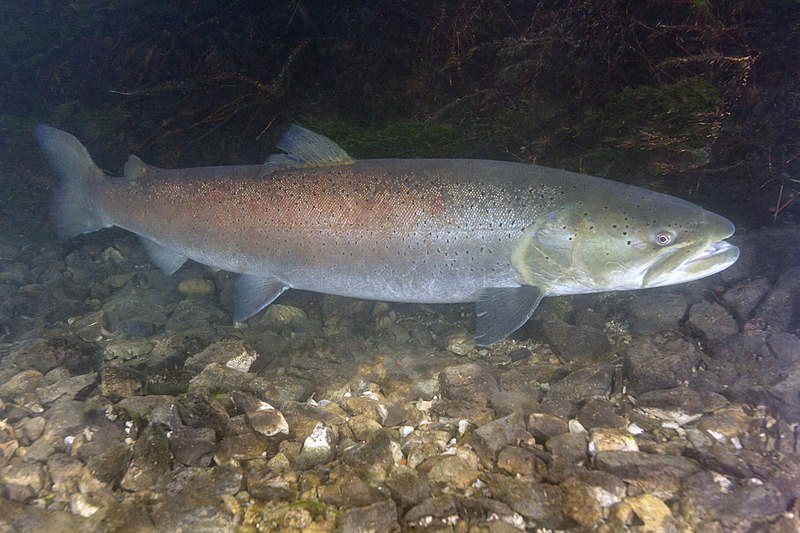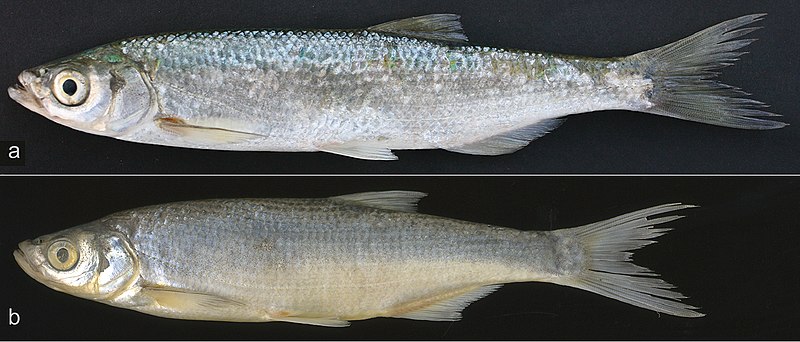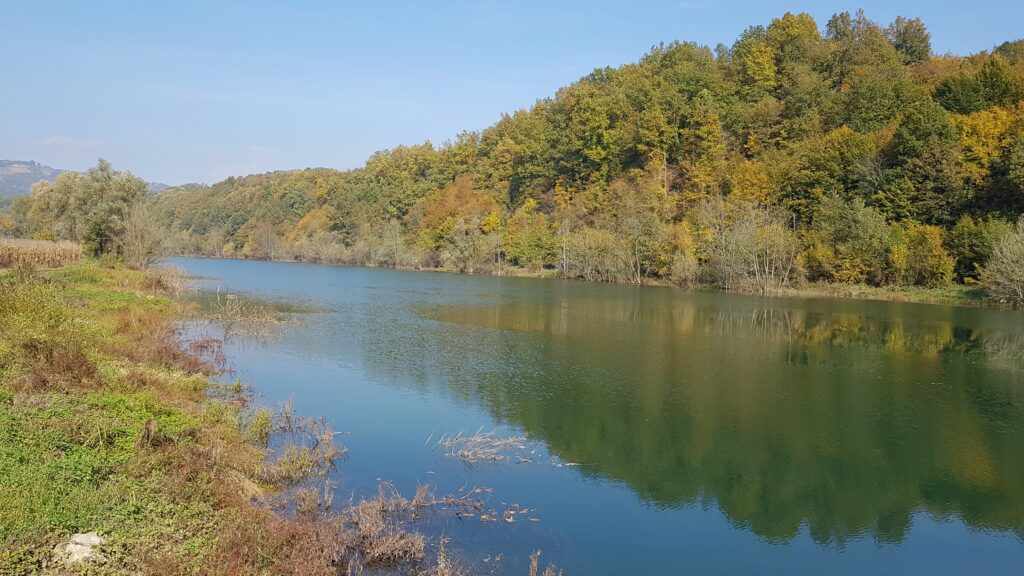The EIB-financed Ilovac hydropower plant was built on the river Kupa in north-west Croatia at around the same time as scientists established the existence of a new fish species there – Alburnus sava. Since the dam’s construction, the species has not been found at the site. Has Alburnus sava’s habitat been degraded for just 1.4 MW of installed power?
Pippa Gallop, Southeast Europe Energy Advisor | 2 April 2020

Ilovac Dam
In 2012, the EIB signed a loan for the Croatian Bank for Reconstruction and Development (HBOR) to use for smaller projects that the EIB could not usually finance. One of these was the Ilovac hydropower plant in the river Kupa Natura 2000 site, for which a sub-loan was signed in 2014. The plant went online in 2015.
The project used an existing weir, but a concrete reinforcement and inflatable rubber dam raised it from 1.3 m to 3.4 m, turning the river into a reservoir stretching several kilometres upstream.
Did the environmental assessment miss endangered species?
The environmental impact assessment (EIA), approved in 2010, left numerous questions unanswered. The two sampling visits carried out in 2009 did not establish whether the endangered Danube Salmon (Hucho hucho) was present at the site or not. It had been identified at other times in the Kupa, but no additional efforts were made to establish its presence for the EIA. One specimen of the endangered Pontian Shemaya (Alburnus sarmaticus) was found during the sampling visits, but the project’s impacts on the species were not explored separately in the EIA. In the years following the approval of the EIA for Ilovac, it was established that the Alburnus sarmaticus present in the Kupa were in fact specimens of another, newly identified species, Alburnus sava, which has been found only at 6 locations in Croatia, in the Kupa, Sava and Dobra rivers.
Altogether, the EIA identified three endemic fish species, five strictly protected ones, three considered endangered in Croatia, one considered critically endangered in Europe, one considered endangered in Europe, and fifteen protected under international rules like the Bern Convention or Habitats Directive, but still – miraculously – considered that the dam would not have significant impacts on them.
Little attention was paid to other species living around the river and it appears that the sections of the EIA on non-fish fauna may have been written without carrying out field visits.
The study also failed to assess the cumulative impacts with other hydropower plants downstream – an old one at Ozalj and a planned one at Brodarci. All of this would have anyway been unacceptable, but especially at a site that should have been designated as critical habitat under EIB policy due to the species present, thus requiring additional in-depth assessments.

Reservoir or no reservoir?
The EIA also seems to have under-estimated the size of the area impacted by the plant. It was expected no reservoir would be created, even though, at the dam, the average water level rise would be 2 m. The study claimed that at the very border of the area of influence, 4 km upstream from the dam, the increase in the water level would not be more than 2 cm.
A cascade near the village of Obrež-Vivodinski is at the upper end of the river stretch slowed down by the dam. The environmental permit prescribed exceptional care in maintaining low water level oscillations and avoiding the flooding of the sections with rapids, particularly in spring. This is important because such rapids are a potential habitat of Alburnus sarmaticus / Alburnus sava.
Yet field observations by a team from BIOTA showed that the cascade was flooded during a visit on 3 July 2019, while it was visible during a visit on 11 September 2019, when the hydropower plant was not in operation. This reduced the water level by around 0.5 m and uncovered the flooded cascade. This would not be the case if indeed the impact of the dam at this location was as described in the EIA, as the difference could not be accounted for by seasonal variation.

No additional checks by the EIB
During the period when the Ilovac project was being developed, as part of Croatia’s EU accession process, the European Commission several times raised concerns about the quality of environmental permitting processes. Yet as far as we know, the EIB did nothing to double-check HBOR’s due diligence or the quality of the EIA, and the gap between Croatian standards and EU and EIB standards remained unaddressed.
No-one knew about the EIB and HBOR’s involvement
Under normal circumstances, civil society organisations would have alerted HBOR and the EIB to their concerns and tried to ensure the project’s impacts were properly assessed. But this was impossible to do before the plant was built, because it was only in 2016 that the EIB disclosed its role in the project at all. Since then, the EIB has directed most questions about the project to HBOR. HBOR systematically refuses to disclose information to the public about its projects and other activities, despite having lost 31 court cases on access to information.
Habitat loss
Given that it was not completely clear what was living at the site before the plant was built, it is also hard to measure the exact impacts since the plant started operation in 2015. Moreover, different monitoring visits have found different results.
According to the environmental permit, monitoring was supposed to happen annually in the winter period. However, as of early 2020, it had been carried out only in May 2017 and June 2018. It is not clear why it was not done in the winter months as required by the permit. In addition, the power plant was not working during either of the visits.
Unsurprisingly, this official monitoring did not find major impacts, and concluded that the habitats remained typical of fast moving water. This is important because both the environmental permit and the guidelines for the protection of habitats and wild taxa in the Kupa Natura 2000 site prescribe the preservation of rapids in the river Kupa.
What the official monitoring did find, though, was that the fish pass was dysfunctional. Another informal visit was made by the authors of the official monitoring report in March 2018, when the dam was operating, and even with very high water levels, the turbulence and water velocity were too high for the pass to work properly.
On the other hand, an independent study commissioned by WWF Adria and carried out by BIOTA in 2019 states that the habitat has already changed into one supporting fish species living in slow-moving, still or stagnant water, and that there has been a drop from 18 species surveyed in 2010 and 2011 to 11 in 2019 (counting species found both above and below the dam). The number of species of Community interest (i.e. those protected by the EU’s Habitats Directive) found during the sampling dropped from seven to three.

Can the damage still be reversed?
What has been lost at these spots is suggested by BIOTA’s research next to the village of Orljakovo, 7 km upstream from the dam. The survey showed a much better ecosystem status compared to the dam location: 16 species in total, and 7 of those species of Community interest. It identified the presence of the common dace (Leuciscus leuciscus) and Alburnus sava.
These species thrived under the cascades and in the fast-flowing waters downstream between Orljakovo and the former weir at Ilovac that are now flooded. These habitats have been lost, although BIOTA’s assessment is that the damage is not irreparable for now. They could be restored if the dam in Ilovac was removed or did not raise the water level upstream and if it had a functional fish pass, tailor-made for this location and the species present.
Policy updates needed
Some of the issues raised result from failure to properly implement existing EIB policies, while others point to improvements needed in the bank’s environmental and social policies, whose revision is scheduled later this year. Improvements are needed in terms of:
- Stronger environmental due diligence
The bank’s forthcoming new Standard on Financial Intermediaries must require referral of high-risk projects to the EIB for assessment before approval, just as the EBRD’s 2019 Environmental and Social Policy does. A list of high-risk project types should be included and must include hydropower projects—no matter the size or design.
The EIB’s 2019 Hydropower Guidelines rightly emphasise the importance of a strategic approach to hydropower development. This needs to be further stipulated in the bank’s environmental and social policies, with clear instructions on quality control of strategic studies, in particular outside of the EU.
Although there was an implementation failure of existing EIB Standards on Natura 2000 sites and critical habitats, these also need to be strengthened, especially for investments outside of the EU.
Where non-EU countries lack legislation similar to the Habitats Directive, equivalent protection must be ensured via critical habitat requirements, and clear procedures for implementation need to be prescribed. Financial Intermediaries should not be allowed to finance projects in Natura 2000 sites or critical habitats at all.
However, problems also exist in EU countries, and EIB needs to introduce a tailored approach to Member States that are lagging behind in applying EU legislation such as the Water Framework Directive and Nature Directives. Additional assessments may be needed.
- Transparency of intermediated investments
For financial intermediary projects referred back to the EIB for due diligence, the EIB also needs to publish environmental information on each project, prior to the signing of the sub-project’s financing contract with the final beneficiary.
- Stricter monitoring requirements
The EIB also needs to do regular project-level monitoring of intermediated investments that are deemed high-risk. Such monitoring requirements should be spelled out in the Bank’s Practices and Procedures and in contracts with financial intermediaries.
The bank also needs to make sure that the investor’s own monitoring costs are included in the project financial calculations, and that they publish real-time environmental information such as environmental flow, water levels in the reservoir, and live streaming showing the fish pass. Given the dispersed locations of small hydropower plants, this is the only way that regular monitoring can be carried out reliably, without plant operators being able to adjust the plants as inspectors approach.
More information in detail can be found on the latest case study by CEE Bankwatch Network and WWF Adria here.
Never miss an update
We expose the risks of international public finance and bring critical updates from the ground – straight to your inbox.
Institution: EIB
Theme: Hydropower
Location: Croatia
Project: EBRD/EIB energy policy review
Tags: Croatia | EIB | hydropower
